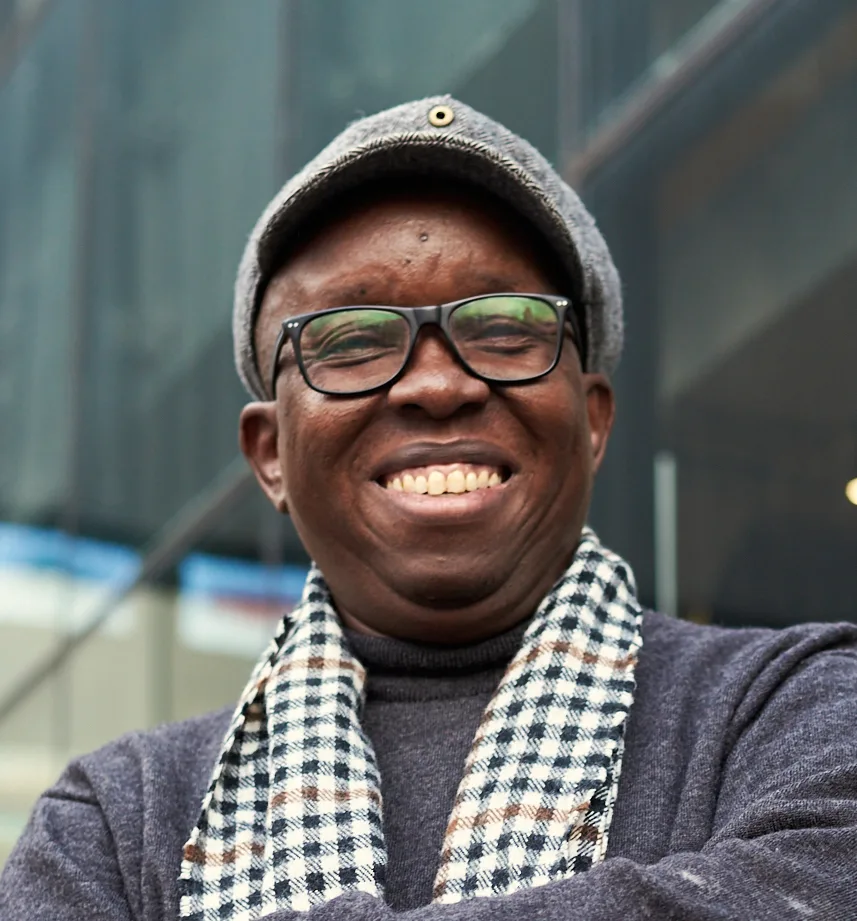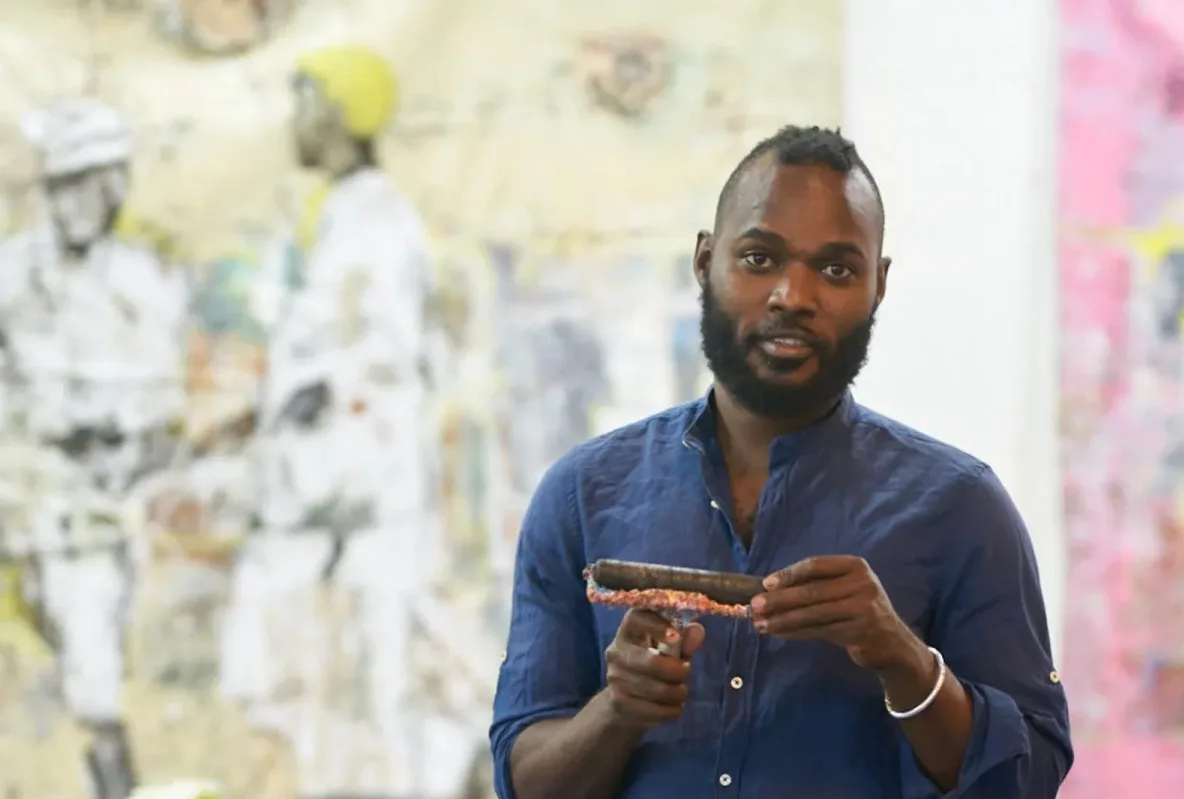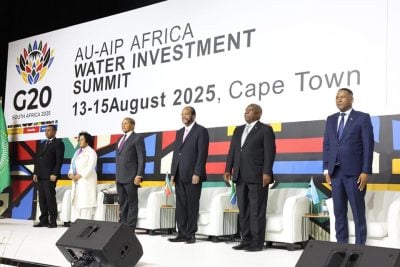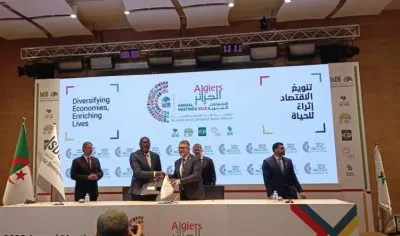It’s no wonder that the 38-year-old Kaloki Nyamai, a Nairobi-based painter and mixed-media artist, is using his brilliant and captivating visual storytelling to invite us to a “dialogue and meditation” with his Dining in Chaos – an ongoing interrogative series in which he exhorts the viewer to engage with difficult histories, colonial traumas, identity politics and the circumstances of societies living through wars and political upheavals. Artists have been described as “mirrors of society” and many have not shied away from reflecting or challenging political hegemony or participating in revolutionary discourse or movements.
As wars rage – from Gaza to Sudan, Congo and Ukraine – Nyamai poses an existential question: does one stop what they are doing or do they continue unperturbed in the chaos?
His storytelling is borne out of the oral traditions of his people, the Kamba of South-eastern Kenya. These were passed on to him by his grandmother – who as a folk musician was detained for her “politically-loaded” song in the 70s at a public event where president Jomo Kenyatta was present. That event left her jaded and traumatised. It is what makes Nyamai eschew “a confrontational narrative”: he rather tactfully employs visual metaphors to express his personal political opinions.
In mid-June at the world-famous Art Basel international contemporary art fair Nyamai unveiled – to great acclaim – his largest canvases to date, the monumental Dining in Chaos, a triptych of parts each 6 by 4 metres.
‘A heartfelt social portrait’
The series of paintings depicts people resting and taking care of each other in front of tumultuous scenes that range from the playful and euphoric to aggravated protest. As Barbara Thumm, his Berlin-based gallerist, describes it the series “paints a heartfelt social portrait of what it feels to live through times of global crisis”.
I had a chance to see an earlier version of the series in April during the launching of Nyamai’s Kamene Art Residency space in the working-class district along Ngong Road in Nairobi. It was then on its way to the Galerie Barbara Thumm for an exhibition during the respected Berlin Art Week.
Hanging unstretched on the white walls were five works with blurred faces and disappearing outlines of figures in different scenes, on ripped and distressed canvas with open seams exposing the threads, layers upon layers of thick flaking paint and images of multiple figures hiding autobiographical stories. Archival newsprint and photo-transfers revealed Kamba folklore and family histories, referencing memories of time spent with his folk musician grandmother and passed along his lineage through his art-loving seamstress mother.
Nyamai’s hand-stitching and threading, using both hand-woven sisal ropes and reclaimed threads from salvage of burnt-out rubber tyres, add an extra volume and layer on the canvas, lending it a tactile quality – a metaphor both for “suturing” and piecing together dismembered parts of our history and at the same a “curing and healing” of historical traumas wrought by colonial cruelty and dispossession.
His paintings give you this look and feeling of being gruff, raw, rustic and weathered – of a dated period with its flaking, similar to that of an exterior wall with matte paint suffering the effects of denudation due to time and weathering and abandonment. They recall da Vinci’s famous retort that “Art is never finished, only abandoned” and perhaps this is Kaloki’s genius in making us “time-travellers”.
In one painting you see a group of teenage boys with their fists punching the air, referencing the violent political street protests Nairobi experienced earlier this year. In another a lone middle-aged man’s figure is etched out in chalky browning pigment, sitting nonchalantly holding a red bowl, perhaps of soup, by a sidewalk: behind him there seems to be a brawl going on. In April, at the Berlin Gallery Weekend, it is whispered that collectors scrambled for the five pieces on offer, popping up to €50,000 for a piece.
His narrative style revisits important events with historical and political weight, making his work much sought after with multiple showings at some of the most important art calendar events.
On a high in Venice
In 2022 Nyamai started off the year exhibiting at the Dak’Art Biennale, Africa’s most important and oldest art event. He closed the year on a high as one of the quartet of artists selected to exhibit in the Kenya pavilion at the prestigious Venice Biennale, the longest-running and most important art event in the world.
Since then he has participated across the world, from the Berlin Gallery Weekend to Basel Art Fair editions in Miami, Basel and Seoul. He will close the year at Art Basel in Miami, which will be a culmination of his Dining in Chaos series.
As demand for his work has grown so has his career, with nods from art museum curators who have not been left behind as they have acquired his works for collections such as those of the Dallas Museum of Art, South Africa Foundation for Contemporary Art and the UTA Artist Space Collection in Atlanta, Georgia. Works have also been snapped up by important and esteemed private collections, from the Robert Devereux collection (London and Nairobi); the Schulting collection; the Bentata collection; and the Harvey collection.
As the year draws to a close, Nyamai has much to be thankful for. James Cohan of the eponymous New York gallery recently announced signing of Nyamai, giving him much-needed representation in the $30bn-plus New York art market. This was followed weeks later with a visit to Nairobi by James Cohan – who has also booked Nyamai for his first New York solo exhibition in March 2024. There he will present his “most important work yet” in a new developing, yet to be revealed, body of work. In the James Cohan stable he joins good company, such as the legendary British-Nigerian sculptor and multimedia artist Yinka Shonibare CBE and Addis Ababa-based Elias Sime.
Nyamai’s new studio in the Karen suburb of Nairobi sits on 1.5 acres of lush and woody sloping ground in a storied and historic neighbourhood that was immortalised in the Oscar-winning Out of Africa biopic. It best illustrates the ambition of Nyamai and his outlook for the future. The studio development is in two phases. Phase 1 comprises a monolithic concrete double volume roof structure with a large glass frontage hewn out of an underground rock with a green roof filled with a garden and indigenous trees, a catfish-filled dam and an infinity pool.
Spoiler alert: phase 2 of the studio will even be grander and more prestigious, with the design commission reportedly going to a world-famous overseas architect.
In just over a decade Nyamai has made great strides in his career with exhibitions and collectors cutting across the seven seas as he breaks barriers and pushes the limits of his imagination and creativity – even as his own home town hardly knows much about him or boasts of any acquisition of his work in either public or institutional collections.
Want to continue reading? Subscribe today.
You've read all your free articles for this month! Subscribe now to enjoy full access to our content.
Digital Monthly
£8.00 / month
Receive full unlimited access to our articles, opinions, podcasts and more.
Digital Yearly
£70.00 / year
Our best value offer - save £26 and gain access to all of our digital content for an entire year!

 Sign in with Google
Sign in with Google 



